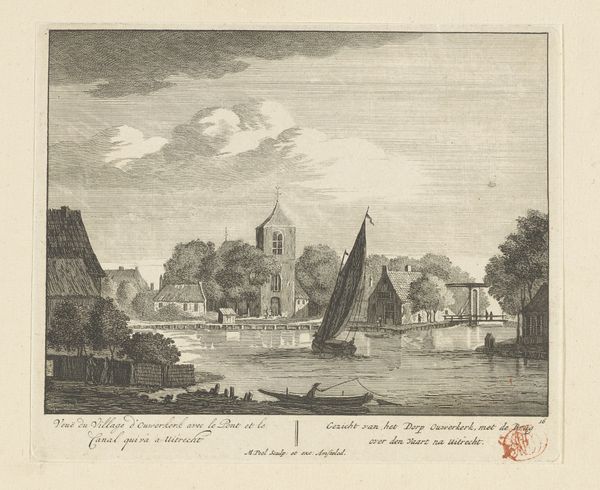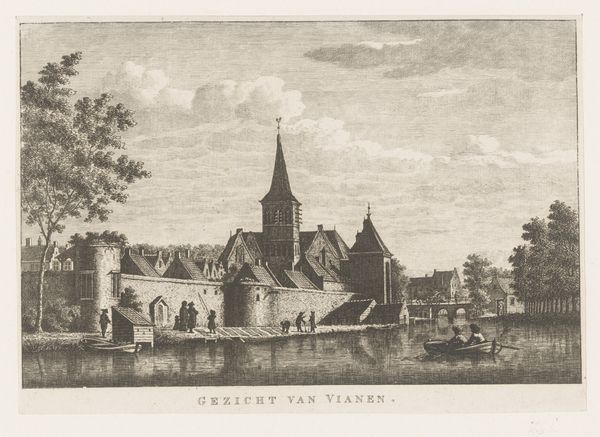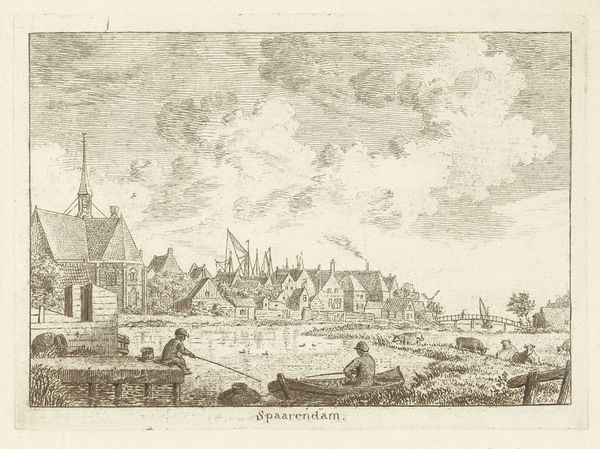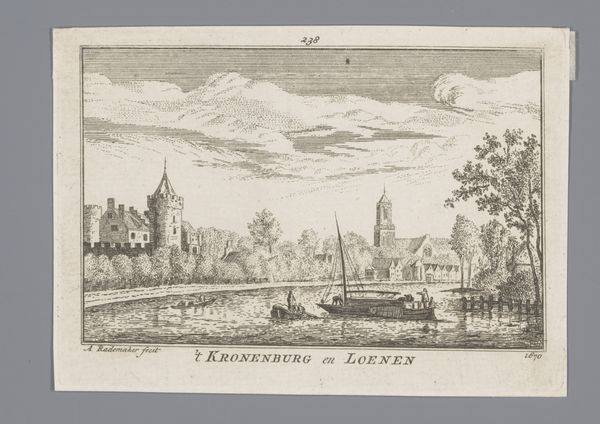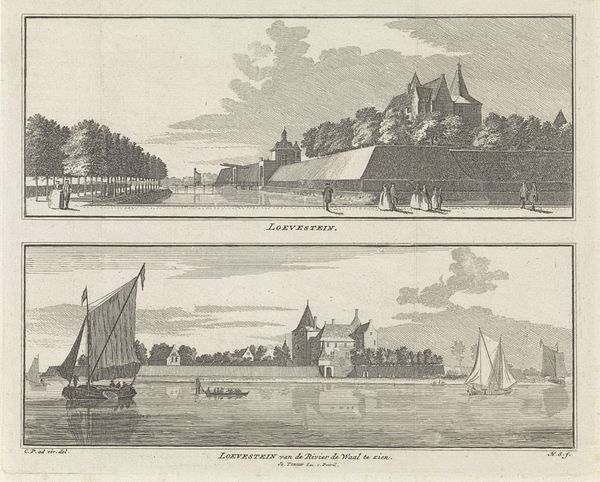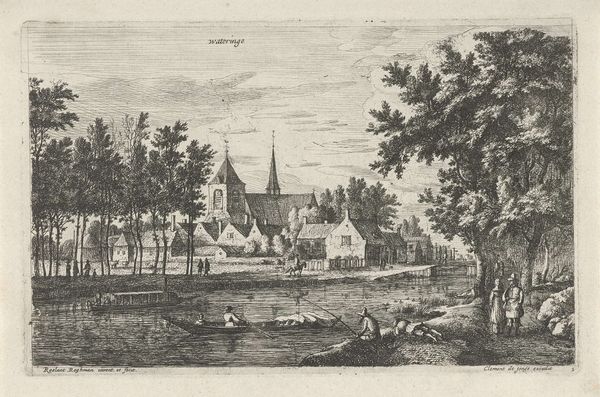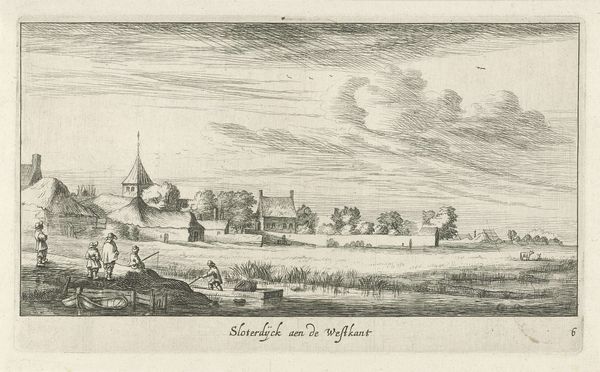
print, engraving
#
quirky sketch
#
dutch-golden-age
#
mechanical pen drawing
# print
#
pen illustration
#
pen sketch
#
old engraving style
#
landscape
#
personal sketchbook
#
sketchwork
#
pen-ink sketch
#
pen work
#
storyboard and sketchbook work
#
engraving
Dimensions: height 80 mm, width 115 mm
Copyright: Rijks Museum: Open Domain
Curator: We’re looking at "Gezicht op IJsselmonde," a print created between 1727 and 1733 by Abraham Rademaker, housed here at the Rijksmuseum. Editor: It feels so immediate. Almost like a fleeting impression captured in ink. The hatching feels hurried, as if Rademaker was sketching from life, trying to capture the light on the water. Curator: Rademaker was documenting topographical views. Notice the way he emphasizes the church spires, placing the community and its faith at the heart of the composition. This visual prioritization spoke volumes to the Dutch identity. Editor: I’m struck by the economy of means here. Just ink and paper, transformed into a bustling riverside scene. Think about the work of printmaking at that time, the artisanal labor invested in the etched plates and each individual print. The original year that appears to the right lower side in the print is 1633, how interesting. It's likely the town itself was important at the time. Curator: Absolutely. Water, particularly rivers, are laden with symbolic weight in Dutch art and life. It represents the flow of life, commerce, and connection, as we see with the boats. Notice the people here—some working, others traveling—the river binds it all together. It's about the spirit of a place more than an exact representation of its geographical attributes. Editor: The uniformity and replicability that the print provides creates availability to people and distribution channels which helps make accessible works that democratize art viewing. What kind of social access can a simple pen stroke afford? Curator: In these landscapes, the natural world offers more than just aesthetic pleasure; it’s evidence of God’s presence, divine order rendered accessible through art. And as viewers, we also locate ourselves within that cultural narrative, too. Editor: Seeing the pen marks so raw makes me feel much closer to his experience of viewing and processing than a painting, a really thoughtful way to bring Rademaker and his community together. Curator: It certainly prompts reflection on place and belonging. Editor: Indeed. A lovely piece offering access to an important view through time.
Comments
No comments
Be the first to comment and join the conversation on the ultimate creative platform.


